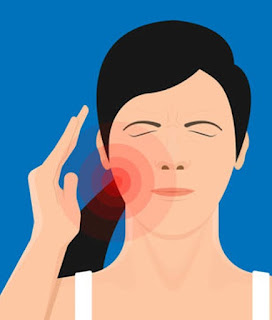COVID-19 vaccine-associated myositis
A 53-year-old healthy man received the first dose of the ChAdOx1 nCoV-19 vaccine (COVISHIELD) into his left deltoid muscle. He experienced pain in the left upper arm, followed by the right upper arm and bilateral calf muscles (left more than right). The pain gradually increased, restricting his daily activities. On the 11th day of vaccination, he had difficulty walking and moving his left arm. He also reported generalized muscle weakness, more pronounced in the proximal upper and lower limbs than the distal ones. His medical history was unremarkable with no evidence of COVID-19 infection in the past.
Serologic testing yielded mildly increased serum creatine kinase (187 U/L, reference range 40–171 U/L) and alanine transaminase (50 U/L, reference range 10–40 U/L) concentrations. Serum bilirubin, aspartate aminotransferase (AST), gamma glutamyl transpeptidase (GGT), alkaline phosphatase (ALP), and C-reactive protein levels were normal. Urine analysis excluded myoglobinuria.On MRI, edema was observed in the left deltoid muscle with a thin layer of subfascial fluid adjacent to the muscle belly (see Figure). Deltoid muscle architecture was preserved. Subtle edema was also noted in the medial head of the left gastrocnemius muscle, with the edema fluid tracking along the intermuscular plane between the gastrocnemius and soleus. No collection or abscess was seen. MRI of the right arm and leg was normal. Based on the findings, a diagnosis of COVID-19 vaccine-associated myositis was made.
On the first follow-up after 1 week (18th day of vaccination), the pain and tenderness had reduced considerably. However, the difficulty in walking persisted. It improved with rest after 5 weeks.
A 67-year-old woman presented with left arm edema, rash, and weakness after the 2nd dose of the BTN162b2 vaccine. Raised muscle enzymes and inflammatory markers with muscle edema on MRI and myositis findings on the electromyogram established the diagnosis. She was successfully treated with methylprednisolone pulses, intravenous immunoglobulin, methotrexate, and hydroxychloroquine.
49 cases of post-vaccinal myositis (mean age: 56.55 + 17.17 years, 59% women, 12 after the ChAdOx1 vaccine, 27 after the BNT162b2, 8 after the mRNA-1273, 1 after the DB15806 (Coronavac), and 1 after the Ad26.COV2.S) are reviewed in a recent study. Muscle involvement was the most common manifestation (79.5%), followed by skin involvement (53%) and ILD (interstitial lung disease, 34.6%), which were more common in the m-RNA vaccinees.
Autoimmunity associated with vaccines may be related to specific HLA phenotypes, the development of autoantibodies, or even evolve into a rheumatological disorder. Few of the other reported cases of vaccine-induced autoimmunity include optical neuromyelitis, transverse myelitis, autoimmune encephalitis, sensory neuropathy, and polyarthritis autoimmune rheumatoid arthritis. One case was followed by fatal breakthrough infection.
The antibodies against SARS-CoV-2 spike glycoproteins have been suggested as a possible cause for acute autoimmune responses. Other proposed mechanisms include cytokine-mediated autoinflammation, CD8 T-cell overactivation, formation of antigen–antibody complexes, and structural deformity of myocytes caused by intake of viral antigen.
As it is noted in animal models, the TLR4-HMGB1 pathway is holding a leading role in the pathogenesis of inflammatory myositis leading to increase in MHC-I and other proinflammatory cytokines’ expression including IL-6 and TNF-a. This is particularly important in genetically predisposed individuals with a hyperactive immune system
REFERENCES
Bose P, Goenka U, Moitra S, Majumdar S, Goenka MK, Sen SG. COVID-19 vaccine-associated myositis - a case report. Clin Case Rep. 2022 Sep 12;10(9):e6314. doi: 10.1002/ccr3.6314. PMID: 36110335; PMCID: PMC9465691.
Syrmou V, Liaskos C, Ntavari N, Mitsimponas K, Simopoulou T, Alexiou I, Vlychou M, Katsiari CG, Bogdanos DP. COVID-19 vaccine-associated myositis: a comprehensive review of the literature driven by a case report. Immunol Res. 2023 Mar 16:1–10. doi: 10.1007/s12026-023-09368-2. Epub ahead of print. PMID: 36928720; PMCID: PMC10018601.




Comments
Post a Comment